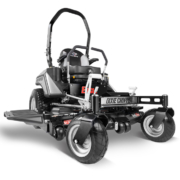There are plenty of options in the marketplace when it comes to choosing the right zero-turn lawnmower. And if you’ve decided that a zero-turn mower is right for you, it’s time to understand what to look for in a machine when stepping up to a new experience. From offering superior cut quality and a comfortable ride to being durable and easy to maintain, there are several characteristics to look for in a zero-turn. Below are the major areas to focus on when shopping.
Evaluate your needs
A zero-turn mower needs to meet the needs of your specific situation, so it’s important to ask yourself what size zero-turn can maneuver best in your space and how long it will take to get the job done. Zero-turn lawnmowers are ideal for yards with lots of obstacles due to their zero-degree turning radius, and they can get the job done faster, so take into account the unique parts of your lawn when making a decision.
Zero-turn feature checklist
Once you’ve considered the needs of your yard and decided on the right size mower, there’s a checklist of features that your zero-turn mower should fulfill. Beware of zero-turn mowers that focus on just one feature and look for a machine that can excel across the board.
Excellent cut quality and performance
At the end of the day, you need a mower that’s going to give you the best cut possible without sacrificing performance. That means finer clippings, fewer clumps, and a uniform cut. Not all zero-turn mowers were created equal. Yours should be outfitted with a deck that’s focused on maintaining a quality cut (preferably a cut that has been proven out by a trusted third party) but that’s also easy to adjust from a height standpoint. Superior bagging performance is a major bonus, as it makes short work of fine grass clippings.
Zero-turn mowers generally have a breadth of deck sizes, so you can choose the right size for your lawn. For larger yards with more acreage, a larger deck will reduce the amount of time it takes to mow your lawn. However, for smaller yards, the same deck size isn’t practical and in some cases can be limiting.
Strength
Strength and durability are a must for any zero-turn mower you purchase. You’ll want to look for a machine that’s built on a strong frame, houses a powerful engine and resists corrosion. Mowers that are built on a continuous square tubular frame will make for a strong, durable machine.
Comfort
A comfortable ride is just as important as quality and speed. Choose a mower outfitted with comfortable features like a high-back adjustable seat so your mower feels like your armchair, ample legroom, ergonomic rubber hand grips for a comfortable grip, and seat isolators for a smoother, quieter ride on any terrain you need to tackle.
Easy maintenance
Maintenance shouldn’t be a headache when it comes to your zero-turn, and your machine should be as easy as possible to maintain. Mowers with maintenance-free spindles, for instance, mean one less part to worry about, while a hinged floor pan makes for easy deck access.
Style
Part of the experience of owning a zero-turn mower is being proud of the machine you’re operating. Take the all-new Ultima Series of zero-turn lawn mowers, for example. These mowers offer an automotive-inspired, compelling design that captures attention and exudes performance.
Cut quality, strength, comfort, maintenance and style are just a few of the many considerations when shopping for a zero-turn. Check out Cub Cadet’s new line of residential zero-turn lawnmowers, the Ultima Series, which pairs strength, comfort and, best-in-class cut* for the ultimate all-around mowing experience.
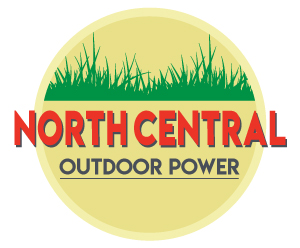
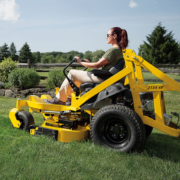
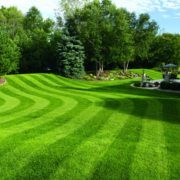
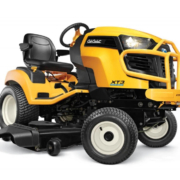
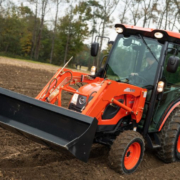
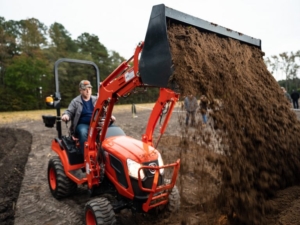 These models feature a new platform, optimized design with integrated joystick valve and an easy-to-maintain Daedong engine, the company says. These tractors also are equipped with a standard USB and 12-volt power outlet. CX2510 compact utility tractor
These models feature a new platform, optimized design with integrated joystick valve and an easy-to-maintain Daedong engine, the company says. These tractors also are equipped with a standard USB and 12-volt power outlet. CX2510 compact utility tractor 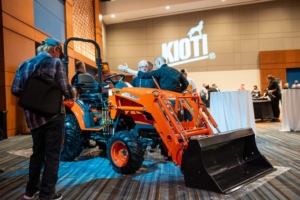 The new CX2510 compact utility tractor offers a twin pedal HST and tilt steering wheel providing comfort and accessibility to a multitude of operators, the company says. It also has dual armrests on the seat and an operator-friendly control layout. CK2610SE compact tractor
The new CX2510 compact utility tractor offers a twin pedal HST and tilt steering wheel providing comfort and accessibility to a multitude of operators, the company says. It also has dual armrests on the seat and an operator-friendly control layout. CK2610SE compact tractor 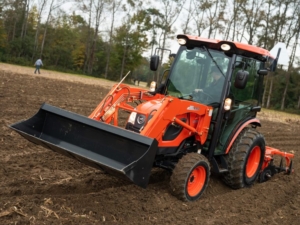 The new CK2610SE will incorporate a factory cab with air conditioning and heat. The new compact tractor also features dual remote valves, HST cruise control and link pedal, and USB and AUX media inputs. New headquarters Along with showing its new models, Kioti officials hosted the dealer event near its newly expanded North American headquarters in Wendell, North Carolina. “With the expansion of our North American headquarters, our new Canadian distribution center and a brand new product line in ZTRs (zero turn mowers), KIOTI has truly embodied amplification this year,” said Peter Dong-Kyun Kim, president and CEO of Daedong-USA, KIOTI Tractor Division. “And we are always impressed by our dealer’s ability to amplify sales year over year. That’s why amplify was the perfect theme for our annual dealer meeting. We have our strong network of committed dealers to thank for a year of continued success.” Courtesy Equipment World
The new CK2610SE will incorporate a factory cab with air conditioning and heat. The new compact tractor also features dual remote valves, HST cruise control and link pedal, and USB and AUX media inputs. New headquarters Along with showing its new models, Kioti officials hosted the dealer event near its newly expanded North American headquarters in Wendell, North Carolina. “With the expansion of our North American headquarters, our new Canadian distribution center and a brand new product line in ZTRs (zero turn mowers), KIOTI has truly embodied amplification this year,” said Peter Dong-Kyun Kim, president and CEO of Daedong-USA, KIOTI Tractor Division. “And we are always impressed by our dealer’s ability to amplify sales year over year. That’s why amplify was the perfect theme for our annual dealer meeting. We have our strong network of committed dealers to thank for a year of continued success.” Courtesy Equipment World 